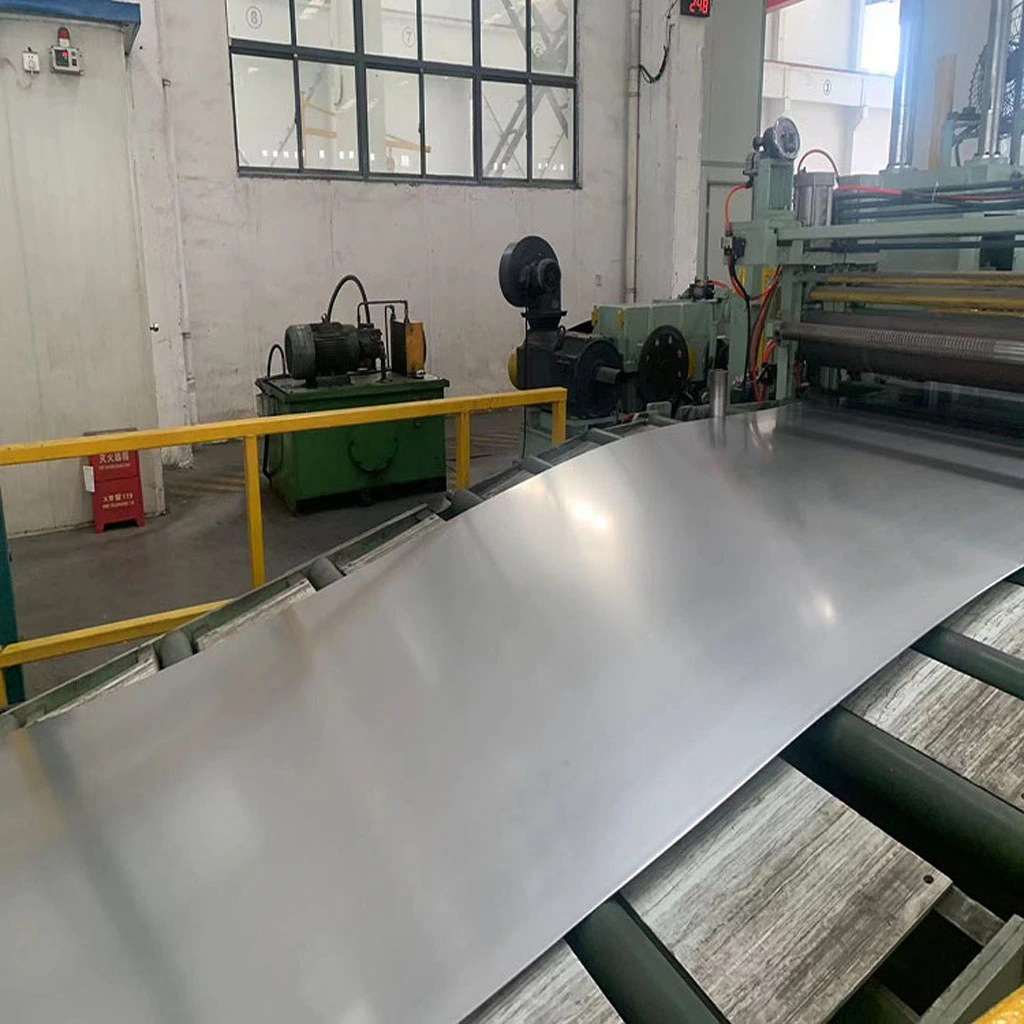What is 317L stainless steel?
2023-06-13
What is 317L stainless steel?
317L stainless steel is a highly corrosion-resistant and durable alloy that finds wide application in various industries. With its exceptional resistance to a broad range of chemicals, including acidic and alkaline environments, 317L stainless steel is particularly well-suited for use in harsh and corrosive environments. This austenitic stainless steel variant contains higher levels of molybdenum, chromium, and nickel than standard stainless steel grades, enhancing its resistance to pitting, crevice corrosion, and chloride-induced stress corrosion cracking. Furthermore, its low carbon content makes it highly resistant to sensitization and subsequent intergranular corrosion. Due to its remarkable combination of strength, corrosion resistance, and versatility, 317L stainless steel has become a popular choice for applications in chemical processing, oil and gas, pharmaceuticals, pulp and paper, and other demanding environments.
Chemical composition of 317L stainless steel
The chemical composition of 317L stainless steel typically includes the following elements:
Chromium (Cr): 18.00-20.00%
Nickel (Ni): 11.00-15.00%
Molybdenum (Mo): 3.00-4.00%
Manganese (Mn): 2.00% max
Silicon (Si): 1.00% max
Phosphorus (P): 0.045% max
Sulfur (S): 0.030% max
Carbon (C): 0.030% max
These percentages may vary slightly depending on the specific manufacturing standards and requirements. The high levels of chromium, nickel, and molybdenum contribute to the excellent corrosion resistance and superior mechanical properties of 317L stainless steel, making it well-suited for challenging environments where resistance to corrosion and high temperatures is essential.
What are the mechanical properties of 317L stainless steel?
The mechanical properties of 317L stainless steel are as follows:
Tensile Strength: The tensile strength of 317L stainless steel typically ranges from 515 to 620 megapascals (MPa), or 75,000 to 90,000 pounds per square inch (psi).
Yield Strength: The yield strength of 317L stainless steel is around 205 to 240 MPa (30,000 to 35,000 psi).
Elongation: The elongation at break for 317L stainless steel is typically 40% or more. This indicates its ability to deform significantly before fracturing under tension, showcasing good ductility.
Hardness: The hardness of 317L stainless steel, as measured on the Rockwell B scale (HRB), is typically in the range of 95 to 110. However, the exact hardness can vary based on the heat treatment and manufacturing processes.
These mechanical properties make 317L stainless steel suitable for a wide range of applications that require both corrosion resistance and strength, such as chemical processing equipment, pipelines, heat exchangers, and marine environments.
What are the physical properties of 317L stainless steel?
The physical properties of 317L stainless steel include:
Density: The density of 317L stainless steel is approximately 7.98 grams per cubic centimeter (g/cm³) or 0.289 pounds per cubic inch (lb/in³). This value indicates the mass per unit volume of the material.
Melting Point: The melting point of 317L stainless steel is typically around 1370 to 1400 degrees Celsius (2500 to 2550 degrees Fahrenheit). This high melting point allows the material to maintain its structural integrity at elevated temperatures.
Thermal Conductivity: The thermal conductivity of 317L stainless steel is approximately 14.6 watts per meter-kelvin (W/m·K) or 85 British thermal units per inch-hour-square foot-degree Fahrenheit (BTU·in/h·ft²·°F). This property determines how well the material conducts heat.
Magnetic Properties: 317L stainless steel is typically non-magnetic in its annealed condition. However, it can exhibit some degree of magnetism when subjected to cold working or when exposed to high temperatures for an extended period.
Coefficient of Expansion: The coefficient of thermal expansion for 317L stainless steel is around 16.5 to 17.5 x 10^(-6) per degree Celsius (9.2 to 9.7 x 10^(-6) per degree Fahrenheit). This property refers to the material’s expansion or contraction with changes in temperature.
These physical properties contribute to the overall behavior and performance of 317L stainless steel in various applications, particularly in high-temperature environments where thermal stability and corrosion resistance are crucial.
What are the characteristics of 317L stainless steel?
317L stainless steel exhibits several notable characteristics, including:
Corrosion Resistance: One of the key characteristics of 317L stainless steel is its exceptional resistance to corrosion. It provides excellent resistance to a wide range of corrosive environments, including acidic and alkaline solutions, chlorides, and sulfates. This makes it suitable for use in chemical processing, pharmaceutical, and marine applications.
High Temperature Resistance: 317L stainless steel offers excellent high-temperature resistance, maintaining its structural integrity and mechanical properties even at elevated temperatures. This property makes it well-suited for applications that involve exposure to high temperatures, such as heat exchangers and furnace components.
Superior Pitting and Crevice Corrosion Resistance: With its higher levels of molybdenum and chromium, 317L stainless steel demonstrates superior resistance to pitting and crevice corrosion. This resistance is particularly important in environments containing chlorides, such as coastal areas or industrial settings where chlorides are present.
Low Carbon Content and Sensitization Resistance: The low carbon content of 317L stainless steel reduces the potential for sensitization, a process that can lead to intergranular corrosion. This property enhances its resistance to corrosion and makes it suitable for applications involving exposure to corrosive environments.
What are the common applications of 317L stainless steel?
317L stainless steel finds wide application across various industries due to its exceptional corrosion resistance and high temperature stability. Its resistance to a broad range of corrosive environments makes it well-suited for applications in chemical processing, oil and gas industries, and pulp and paper production. The superior pitting and crevice corrosion resistance of 317L stainless steel make it an excellent choice for coastal and marine environments where chlorides are present. Additionally, its low carbon content reduces the risk of sensitization and intergranular corrosion, making it suitable for applications involving exposure to corrosive environments. Furthermore, its high temperature resistance makes it ideal for use in heat exchangers, furnace components, and other applications where elevated temperatures are involved. Overall, the versatility, strength, and corrosion resistance of 317L stainless steel make it a reliable and sought-after material in demanding environments that require exceptional performance and longevity.
